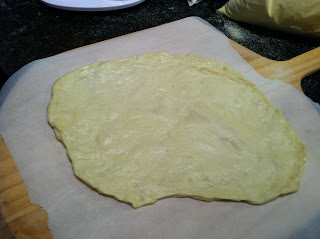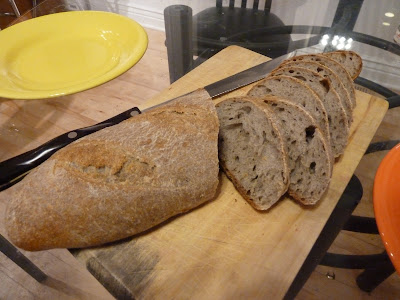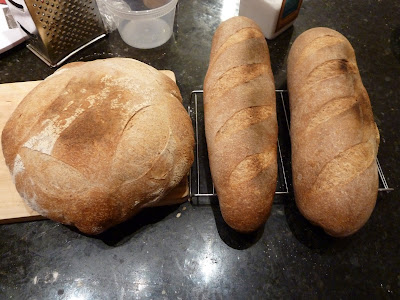I've been meaning to bake this bread for a while. It's a relatively straightforward french sourdough, unique by virtue of its rustic shape. (As has been pointed out to me, this particular specimen more closely resembles a toilet seat than a crown. How's that for rustic?) The formula from Leader's Local Breads calls for a dry, stiff levain at 50% hydration, as used in traditional French baking, which I replaced with my usual ~100% hydration starter. I thought about mixing my starter with some flour but just went ahead with the wet starter and figured I would make adjustments if needed. Once the levain is ready to go it's a pretty straightforward process.
Ingredients:
500g flour (3.25 cups) (type 55 would be used in France - I used a blend of all-purpose and bread flour)
340g water (1.5 cups)
125g levain starter (.5 cup)
10g salt (1.5 tsp)
1. Mix flour and water to form a rough dough and leave to hydrate for 20 min.
2. Add Levain and salt and knead for about 10 minutes by machine, or a little longer by hand.
3. The initial rise is 3-4 hours, and I gave the dough a couple of turns during that time because it was a little slack, a result of the higher hydration from my starter.
4. Once the dough is inflated and springy, turn it out onto a lightly floured surface and roll it into a thick rope about 18 inches long.
5. After I connected the ends of the rope I arranged mine on a floured peel where it sat covered for another 1.5-2 hours to proof.
6. Before going into the oven the crown is scored all the way around on the outer edge. Mine is a bit oblong because it stuck on the peel - more flour next time. It baked for about 35-40 min at 400.
The result is a wheaty, sweet, only slightly sour bread with a nice crisp crust and tender crumb. There are some bigger holes scattered around, but the shot below gives a pretty good idea of the crumb structure. Fit for a king.





















































